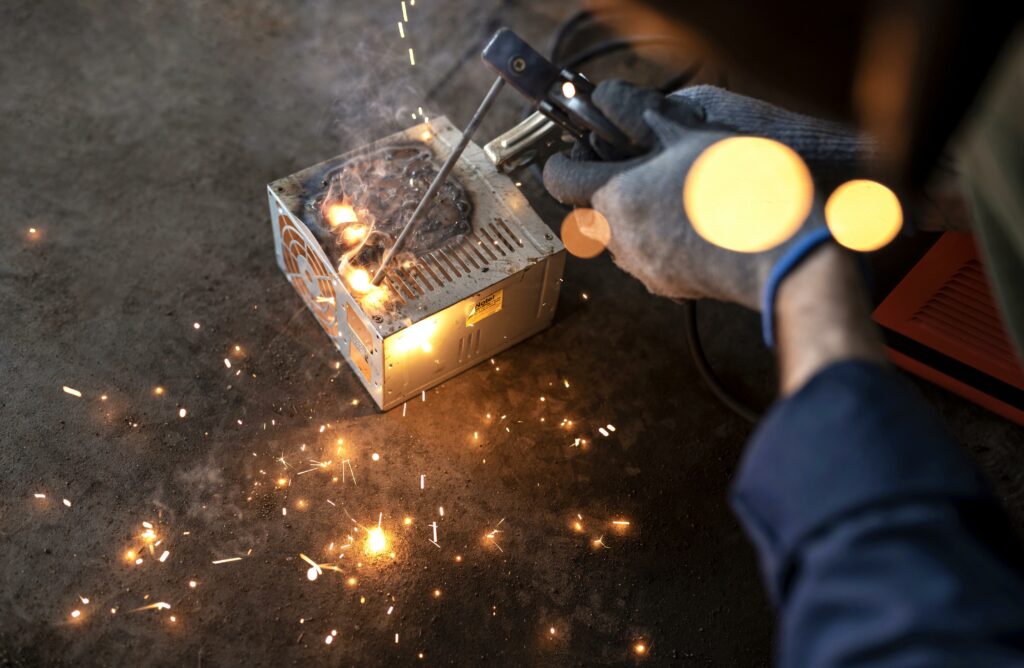Welding metal without a welding device or glue is a big hack, but that involves putting certain adhesives on surfaces that need to be joined together and compressing them into a joint. There are a number of adhesives for metal, including silicone and epoxy based, as well as polyurethane, polyethylene and even polypropylene.
The surface that is bonded is treated with these products and various metal cores are produced to produce a robust connection. Some methods use heat to melt two pieces of metal together, often adding additive metal as a binder to the compound. Other methods rely on pressure to bond the metals together; still others use a combination of heat and pressure.
The welding process changes the workpiece from soldering or soldering, in which the metal parts that are joined remain unchanged, to welding.
This may seem trivial, but there are many individual resources to learn more about how metal parts are joined and assembled without welding. Fortunately, there is another option that is less expensive and requires less time than welding: gluing. This is why welding produces such strong bonds and is one of the most common welding methods worldwide, but in any cases please get the best welding helmet for your safety.
We will look at some of the different ways to join metal parts, including on-site bonding and welding, as well as the differences between adhesives and welds.
R rivets are typically used for construction projects where lightweight materials that require a strong connection are used. Even handheld devices can be used with cold welding wire, which is very portable and easy to use.
Cold welding can be used to join different metals, such as the ones already discussed, such as copper and aluminum, as well as other metals.
Conversely, it is difficult for JB Weld to join two thin metal bars at right angles, but cold welding provides a more efficient way to create a nut-to-metal joint. As with most common welding processes, cold welding shows that heat is necessary for joining a certain material. For example, in welding work, the heat of the welding process can cause the formation of a bond between two different metals in the same metal.
JB WELD uses adhesive as an adhesive whenever possible to hold the very thin layer of JB Weld between two metal parts together. In addition to building solid flanges with Jb Weld, you can also use scrap or metal parts to form a very strong bond between metal parts held with a J b Weld. While J B Weld produces an excellent filler and can even be used to cast small parts, real metal is not used.
From time to time you may need to join or repair metal parts with welding or soldering, but not with Jb Weld.
Fortunately, there are metal-to-metal adhesives and adhesives that make work easier, and they come in a variety of shapes and sizes.
Learn more about bonding metal to metal and other materials and how it works. Metal adhesives produce chemical bonds, which in many cases are preferred to mechanical fasteners such as soldering or welding, especially when metals are bonded to metals. Polyurethane glue glues bonds to a long list of substrates, including metals, epoxy resin forms a strong metal-to-metal bond, super adhesives form an instant strong bond on metal surfaces, etc.
Metal adhesive is often a more cost-effective option, speeding up the process as a whole. Metal glue also reduces the steps on the assembly line, so metal glue is often the more cost-effective option. The main reason for the reduction of assembly steps is the adhesives, which not only reduce density but also assembly costs.
Superglue is a high-performance industrial adhesive that is perfect for almost any household appliance – up. The quality of outdoor building adhesives should be made of polyurethane (moisture-based) or moisture-curing adhesive, which can bond more strongly than ordinary building adhesives. Metal works best with metal work, making it the best metal adhesive for outdoor use.
Look for two joined metal parts that need to have a strong connection and be sure to connect and repair them together.
Simple DIY projects that use non-load bearing metals are bebe JB Weld, listed here on Amazon. In this short article we will cover the basics, but joining metal without welding is a little more difficult. There are a number of ways to connect metal, depending on the project you are working on, and they are all very different.
A popular method is bee welding, but there are other methods that can be used, such as the JB Weld method or even a combination of both.
In some cases, welding can be automated, but this can be a costly solution; it requires, for example, a certified welder and an NDT (destructive weld inspection) used in the quality process. The most popular methods of welding for high-quality metal joints include the JB Weld method, the B welding method and the N DT method.


